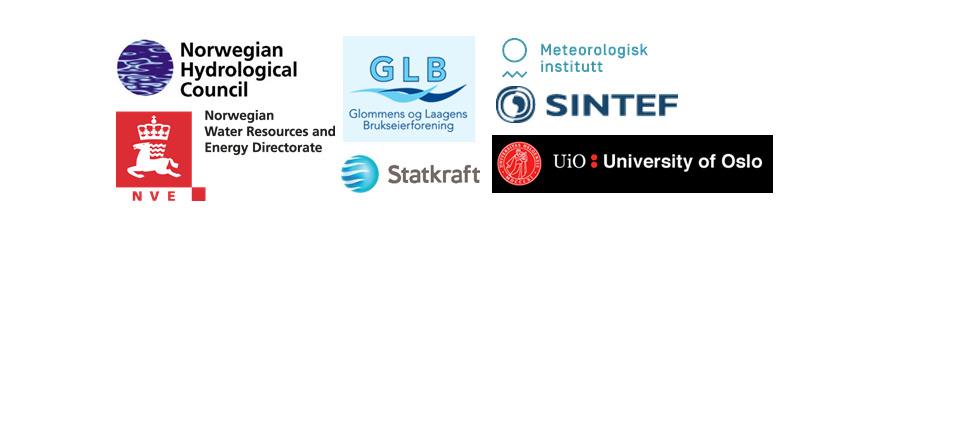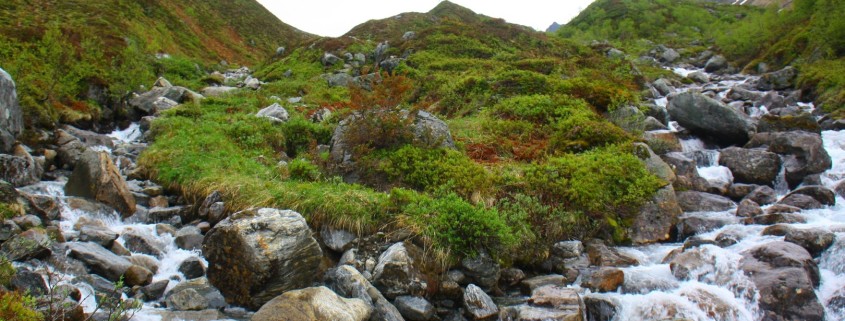4th Conference on Modelling Hydrology, Climate and Land Surface Processes
September 12-14, 2017, Lillehammer, Norway
The integration of hydrology and meteorology is crucial for understanding present and future climate and its impacts on various aspects of nature and society. As the climate is changing so is the land surface, changes which in turn influence the atmospheric circulation and the hydrological cycle. One well-known example is the albedo feedback; a warmer climate means less snow on the ground and a dark surface absorbs more energy than a light surface, thus reinforcing the warming signal through a positive feedback process. This is one of the main reasons why the high latitudes are impacted more rapidly and significantly by climate change than any other region of the world. Another example is soil moisture impacts on land surface-atmosphere interactions through redistribution the available energy as latent and sensible heat fluxes. Still, many studies rely on one-way coupling between the atmosphere and the land surface, thereby neglecting important interactions and feedbacks.
Extreme weather may cause increased frequency of floods, droughts, landslides and damages to infrastructure. The demand for, and the production potential of, renewable energy are also strongly linked to the hydrometeorological system. The Norwegian Hydrological Council recognizes the need to bring together hydrologists and meteorologists to discuss the integration of meteorology and hydrology in all modelling activities that includes weather, climate and water (e.g. weather forecasts, climate prediction, hydrological impact predictions, climate and hydrological model coupling, environmental hazards).
The conference aims to address topics related to modelling the climate system and the interface with the land surface processes and hydrological impacts of climate change. A special focus is given to cold climates, including the boreal, alpine and artic zone. The conference is organized in three sessions.
Session 1: Diagnosing Land-atmosphere interactions
Key note speakers:
Dr. Aaron Boone, Centre National de Recherche Météorologique (CNRM), Météo-France, France
Prof. Frode Stordal, University of Oslo, Norway
Land-atmosphere interactions (LAI), here defined as the exchange of heat, moisture, momentum, and chemical compounds between the surface and lower atmosphere, play a key role in the climate system. The aim of this session is to bring together studies investigating land-atmosphere interactions and its importance for hydrometeorological modelling and applications. Presentations focusing on diagnosing LAI based on observations and land surface modelling (off-line and coupled model simulations) are welcome as are studies assessing the influence of climate and land cover changes on water, energy and carbon (or methane) fluxes.
Session 2: Integration of earth observations for improved forecasting and impact modelling
Key note speakers:
Dr. Patricia de Rosnay, European Centre for Medium-Range Weather Forecasts (ECMWF), UK
Observations (remote sensing, station network and in-situ data) are key in the development of earth system models. As the spatial and temporal resolution improves, more detailed land surface processes can be represented. This session welcomes contributions that addresses: i) the parameterizations of processes in earth system models controlling the interactions and feedbacks between the land (snow, ice, permafrost, soil and vegetation) and the atmosphere and ii) the integration and assimilation of earth observations for improved weather forecasts and impact modelling. It also welcomes contributions that use climate data, including ground observations, radar and satellite observations, to assess climate trends and variability, including extreme events.
Session 3: From modelling to decisions
Key note speakers:
Prof. Markku Rummukainen, Centre for environmental and climate research, Lund University, Sweden
Dr. Nathalie Schaller, Center for International Climate Research (CICERO), Norway
Prof. Oddbjørn Bruland, Norwegian University of Science and Technology (NTNU), Norway
Climate impact studies often depend on downscaled, bias corrected or perturbed input data. This session welcomes contributions that are related to validation, adjustment and homogenization of climate forcing data, and subsequent model sensitivity to the choice of input data (or method). Applications may address hydrologic, atmospheric and climate modelling, and also focus on its societal relevance such as modelling related to management or adaptation strategies, warning and preparedness issues. We also welcome contributions related to communicating forecasts and climate projections for decision-making.
Programme (29.08.17)
Important dates
| February 8, 2017 | Registration opens |
| April 1, 2017 | Abstract deadline |
| May 5, 2017 | Abstract acceptance reply |
| June 1, 2017 | Deadline, registration and payment |
Venue and accomodation
12 – 14 September 2017 at Scandic Lillehammer Hotel in Norway. Please make your hotel booking here.
Travel information
You can easily reach Lillehammer by train from Oslo Airport Gardermoen (approx. 1 h 40 min, 145 km). Travel time from Oslo city center (central train station) is approx. 2 h 10 min. From Lillehammer train station there is a short walk (800 m) to the hotel.
The train schedule can be found here: https://www.nsb.no/en/
Conference fee
Registration rate 12 – 14 September (conference, lunches, dinners 12 to 14 September) NOK 3100,-
Registration rate 12 September (conference, lunch, dinner) NOK 1900,-
Registration rate 13 September (conference, lunch, dinner) NOK 1900,-
Registration
Please registrer here within 1 June 2017.
Excursion
The excursion will go to Maihaugen in Lillehammer.
Conference committee
Prof. Lena M. Tallaksen, University of Oslo (UiO)
Dr. Dagrun Vikhamar Schuler, Norwegian Meteorological Institute (MET Norway)
Dr. Uta Gjertsen, Statkraft
Dr. Ingjerd Haddeland, Glommens og Laagens Brukseierforening (GLB)
Dr. Stein Beldring, Norwegian Water Resources and Energy Directorate (NVE)
Dr. Sjur Kolberg, SINTEF Energy Research (SINTEF)
Sponsors:




